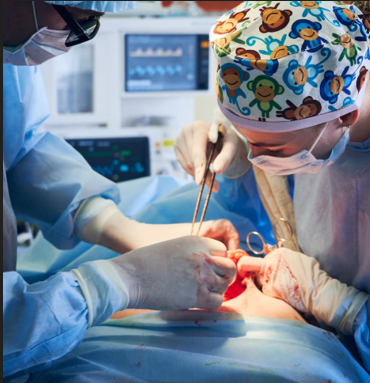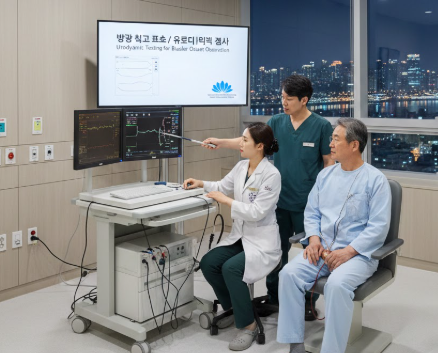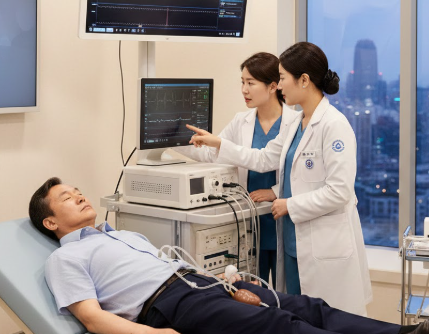Treatment Overview
The High-Definition Laparoscopic Endometriosis Excision (HDLEE) in Korea is a cutting-edge minimally invasive surgical procedure designed for precise diagnosis and removal of endometriosis lesions. This approach utilizes high-definition (HD) 3D laparoscopic imaging to enhance visualization of pelvic anatomy and endometriotic tissue, enabling surgeons to perform meticulous excision with optimal accuracy.
Korea is recognized globally for pioneering advanced laparoscopic technologies and surgical protocols, making it a top choice for women seeking high-precision endometriosis surgery that preserves fertility and pelvic health.
Purpose & Benefits
Purpose:
- Accurately remove superficial and deep endometriosis lesions
- Relieve chronic pelvic pain, infertility, and menstrual irregularities
- Preserve reproductive organs and pelvic function
- Reduce disease recurrence through complete excision
Benefits:
- Superior visualization with HD imaging for precise lesion removal
- Minimally invasive with smaller incisions and reduced trauma
- Shorter recovery time compared to open surgery
- Preservation of fertility and pelvic organ function
- Reduced postoperative pain and adhesion formation
- Short hospital stay (often 1–3 days)
- Enhanced long-term symptom relief
Ideal Candidates
HDLEE is ideal for women who:
- Have confirmed or suspected endometriosis
- Suffer from severe pelvic pain, infertility, or bowel/bladder symptoms
- Wish to preserve fertility
- Prefer minimally invasive surgery over open procedures
Before surgery, Korean hospitals perform thorough evaluations, including high-resolution imaging such as MRI, ultrasound, and diagnostic laparoscopy, to create a personalized surgical plan.
Possible Risks & Complications
While HDLEE is generally safe, possible risks include:
- Bleeding or infection
- Injury to bowel, bladder, ureters, or pelvic nerves
- Adhesion formation
- Recurrence of endometriosis
- Anesthesia-related complications
Korea’s precision laparoscopic techniques and advanced imaging significantly minimize these risks.
Surgical Techniques Used
Korea’s HDLEE approach incorporates:
- High-Definition 3D Laparoscopy: Offers exceptional clarity and depth perception for precise excision.
- Microsurgical Dissection: Ensures preservation of healthy tissue.
- Energy-Based Vessel Sealing (Ultrasonic/Bipolar): Reduces bleeding and operative time.
- CO₂ Laser or Plasma Energy: Used for targeted removal of lesions with minimal thermal spread.
- Fluorescence Imaging (ICG): Improves detection of lesions and vascular structures.
- Nerve-Sparing Techniques: Protects pelvic nerve function to reduce postoperative pain and preserve pelvic health.
These methods ensure complete lesion removal with maximum preservation of reproductive and pelvic function.
Recovery & Aftercare
Recovery after HDLEE is generally faster than traditional surgery. Most patients return home within 1–3 days and resume normal activities within 2–4 weeks.
Postoperative care includes:
- Pain control and incision monitoring
- Avoiding heavy lifting or strenuous activity for several weeks
- Pelvic floor physiotherapy if recommended
- Hormonal therapy or other treatment to prevent recurrence
- Follow-up imaging and symptom assessment
- Fertility counseling if desired
Korean hospitals provide tailored aftercare programs to ensure optimal healing and symptom management.
Results & Longevity
HDLEE offers strong long-term outcomes:
- Complete removal of both superficial and deep lesions
- Significant relief from pelvic pain
- Preservation of fertility and pelvic organ function
- Minimal scarring and reduced recovery time
- Lower recurrence rates with expert surgical technique
- High patient satisfaction and improved quality of life
Korea’s advanced surgical facilities consistently produce excellent results in endometriosis management.
Treatment Process in Korea
The HDLEE process in Korea involves:
- Comprehensive Consultation & Diagnostic Imaging: Including MRI, ultrasound, and diagnostic laparoscopy.
- Personalized Surgical Planning: Based on lesion location, depth, and patient goals.
- High-Definition Laparoscopic Surgery: Performed by expert surgeons using advanced imaging and dissection tools.
- Postoperative Recovery & Follow-Up: Including physiotherapy, hormonal management, and fertility counseling if needed.
Korea offers full medical tourism support, including translation services, travel coordination, and accommodation arrangements for international patients.
Cost Range
The High-Definition Laparoscopic Endometriosis Excision in Korea generally costs between USD 10,000 and 22,000, depending on:
- Complexity and depth of endometriosis lesions
- Technology and surgical techniques used
- Hospital and surgeon expertise
- Length of hospital stay and aftercare services
Costs usually include consultation, surgery, anesthesia, hospitalization, and follow-up care.
Popular Clinics
- Samsung Medical Center (Seoul): Renowned for high-definition laparoscopic endometriosis surgery.
- Asan Medical Center (Seoul): Offers multidisciplinary management of complex endometriosis cases.
- Severance Hospital (Yonsei University, Seoul): Leader in minimally invasive endometriosis excision with fertility preservation.
- CHA Gangnam Medical Center: Specializes in advanced laparoscopic and nerve-sparing endometriosis surgery.
- Ewha Womans University Medical Center: Known for precision laparoscopic excision combined with comprehensive recovery programs.




